So your sight is set on breaking new ground? Does it look like powder? Because only powder makes headlines? Yikes! Its magical lure is in the movies, on the posters, in your dreams, and everywhere else!
Alright, buddy! I know your dreams are made of this feel-good booster but let me paint a picture of you in the powder, so you may judge how complex it can prove for you.
Imagine yourself on ungroomed trails covered with fresh powder. Notice the surface underneath your skis is not tightly packed snow but knee-deep fluffy powder. Are you getting the Titanic vibes? Same bro, same. It can be tough!
Okay, Jack! Let’s keep your ship from sinking by educating you on how to master a pow day! Because this sacred act can turn south if you are not prepared for an iceberg.
You know powder day is never guaranteed. It might be just around the corner, so let’s prepare you to face it before it comes and swallows you.
Easy Powder Skiing Tips for Your next Ski Vacation
Before you begin to ski powder, you need to mentally prepare yourself. How? Repeat after me; ‘I am willing to ski faster (powder reacts slowly as compared to firm snow, but more speed lets you stay afloat), let gravity take me, and surrender to the powder.’ Remember, if you fall, you are falling on fluffy snow.
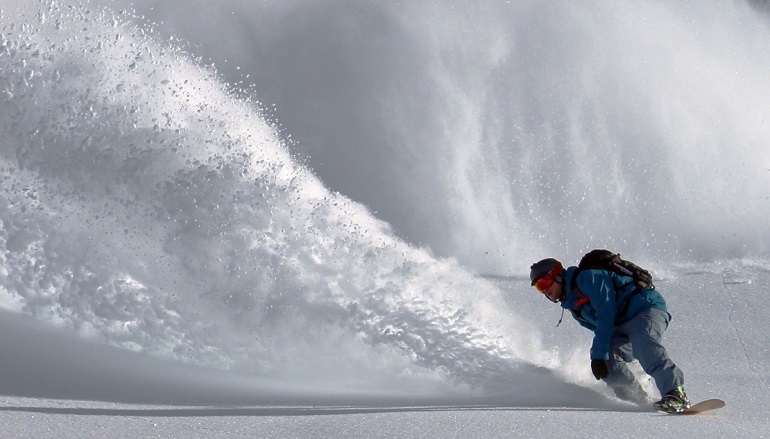
Next, I suggest you plan your route in advance by surveying the terrain from the top of the mountain. Spot trees, hidden obstacles, moguls, and sharp trail turns. While assessing the route, mark the start and end of the run in your mind, and think a lot more about your technique.
Why all this? Because thigh-deep snow might look soft and fluffy, however, skiing powder should only be attempted by advanced riders with adequate experience.
Novices are advised to start early on a pow day. As soon as fallen snow starts to touch your ankles, jump on your skis and take a few green or blue runs in this ankle-deep powder before venturing into deeper terrain.
Now let’s talk about your stance on powder. You are expected to stay centered over your skis with a narrow stance. Keep your ankles flexed and your shins in contact with your skiing boots. Remember, it is a game of balance and weight distribution, which I will explain later.
Whenever you mean to turn, rotate with your thighs, not your edges. Always point your skis downhill instead of traversing sideways across the fall line.
Let’s discuss some more tips to help you learn how to ski powder without getting stuck in the snow.
Create a Large Surface Area to Float On
As mentioned earlier, first of all, you need to plan your route beforehand. Set your starting and ending points, and also look out for obstacles that can hinder your smooth run.
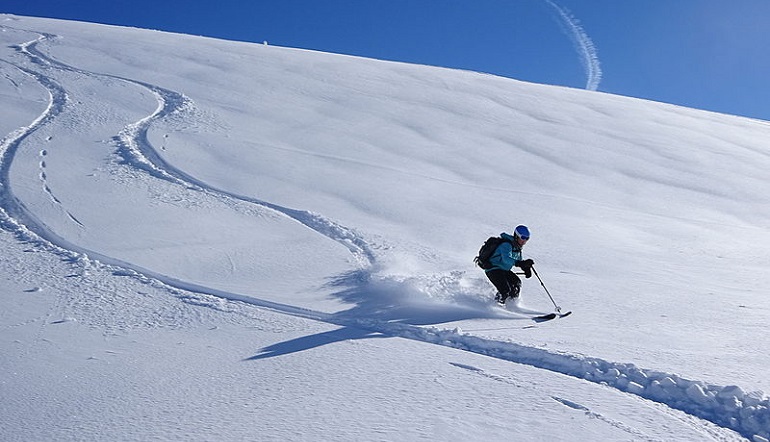
Clearing your path for care-free floatation can help you immensely, especially if you are just a beginner. Next, create a larger surface area with your skis in deep pow. How do you do it?
Start by weighing both skis evenly. While doing so, maintain a centered yet agile stance and keep your shoulders over your toes. Spread your body weight evenly across both skis. This will assist you in keeping your tips above the powder.
Choose Right Equipment
Wider powder skis are your friends here. The wider the powder ski, the easier it would be for you to maintain balance. I suggest you go for a piece that features a wide shovel front, is soft, at least 90mm underfoot, or you can say wider than your boots.
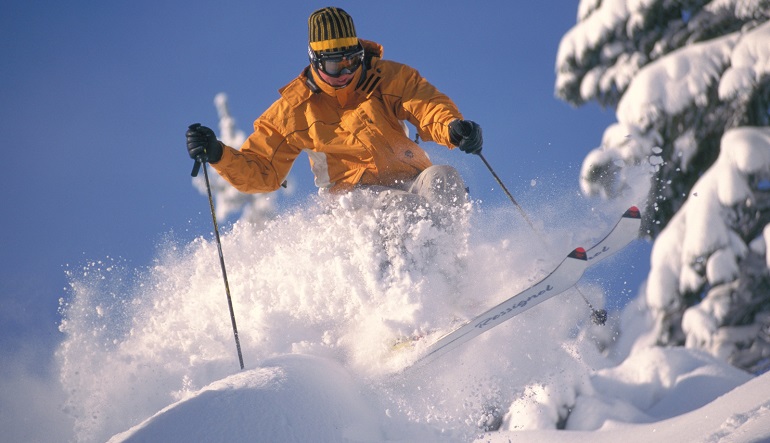
Why so? Because more surface area allows you to stay on top of the snow. Also, if your boot hangs on the edges of the skis, you are most definitely going to fall every minute. Powder skis are also made longer to increase surface area to stay afloat.
Besides a fat ski, opt for a ski with a tip rocker. Such a profile keeps you above snow when going downhill. Mind it, getting your hands on fat skis is by no means the end of mastering powder. It requires a lot of patience and practice.
Find and Maintain Balance While Skiing Powder
Before you take on powder skiing, it is mandatory to master parallel skiing and hockey stop. You need to ace these to learn how to maintain a good balance and control over skis before you can handle powder. Maintaining balance is crucial!
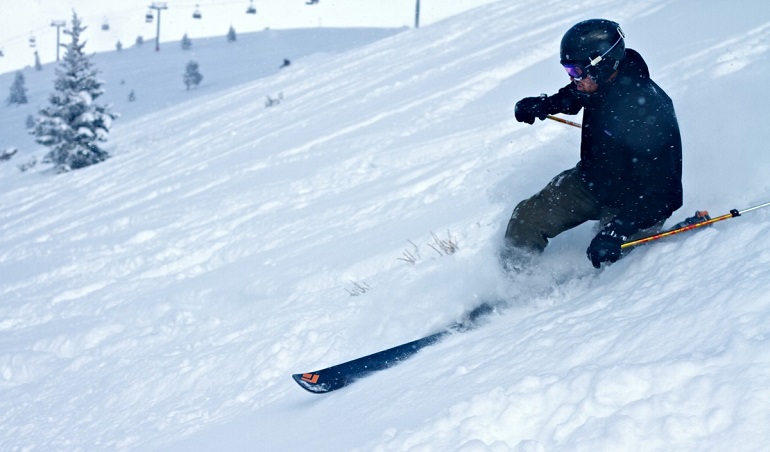
No matter how good you are, you are definitely getting flunked out on your first time in the powder. So? Perseverance and consistency all the way!
For balance, you are required to put a major focus on body position and weight distribution. Always keep your ankles flexed and your shin in line with the front of your boots, and do not forget to keep a narrower stance on soft snow. Lastly, forget edging, instead go about steering with your body weight.
As far as your skis are concerned, put equal weight on both. It is also okay for the outside ski to take more weight, but in the beginning, you are suggested to avoid putting force on the outside ski, instead, stay soft. Doing so allow you to change direction more easily.
For better rhythm, swing your poles forward before you end your turn. Such movement assists in establishing an uninterrupted rhythm.
Fundamental Movements Flexing and Extending
Powder skiing is all about flexing, extending, pushing, and pulling. The powder snow will act as a trampoline if you make the right moves and create a rebound effect from the snow. Creating a rebound is the opposite of what skiers do on-piste.
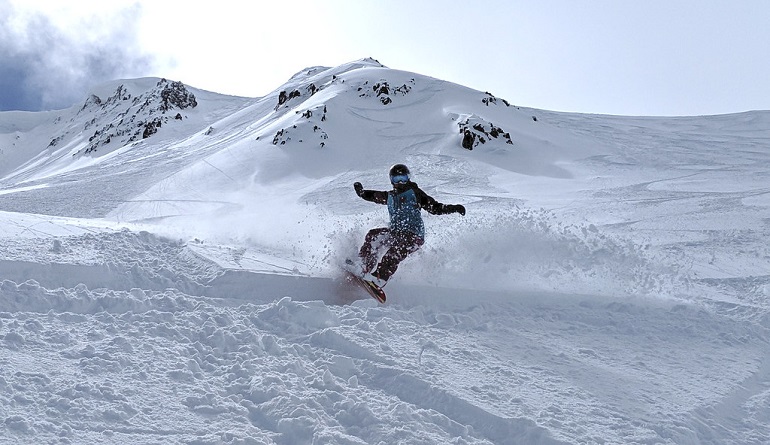
While on powder, you are not turning a lot. You are just attempting to make your tips go in and out of the snow.
This up-and-down movement is created by flexing and extending the legs with each turn. It helps in releasing pressure from the skis when you initiate another turn. Furthermore, it also helps in riding slower rather than sinking.
Steering and Choosing a Line in Powder
Powder turns are quite different from the turns you initiate on groomed slopes. On powder, you are using your legs to guide your skis, while on packed snow, you use edges to carve also.
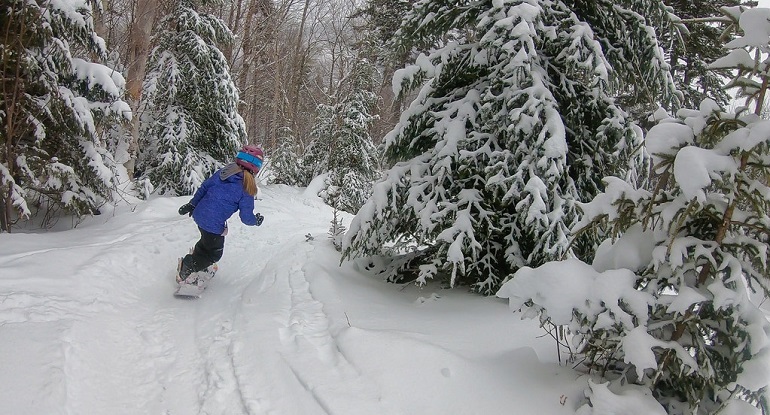
Below are some quick tips for better powder turns:
- Always use your legs for a humble turn.
- Guide your skis through your legs.
- Maintain speed: keeping the same speed will keep you from getting bogged down in the powder.
- Try to stay in the fall line. Make half-moon shapes and return to your original fall line instead of making a zigzag way across the hill.
Don’t Get Frustrated
There is no better feeling than accomplishing the holy grail of skiing conditions, right? It might feel difficult as many of its movements are counter-intuitive to a lot of tricks you perform on a hardpack, but mastering it is a big milestone you want to achieve for further progress.
How to Take Your Powder Skiing to the next Level?
Go deep! Begin focusing on aggressively pressuring the ski to let it dive deeper in the snow and load it up like a canon. When the skis pop out, guide them to a turn and start putting pressure again.
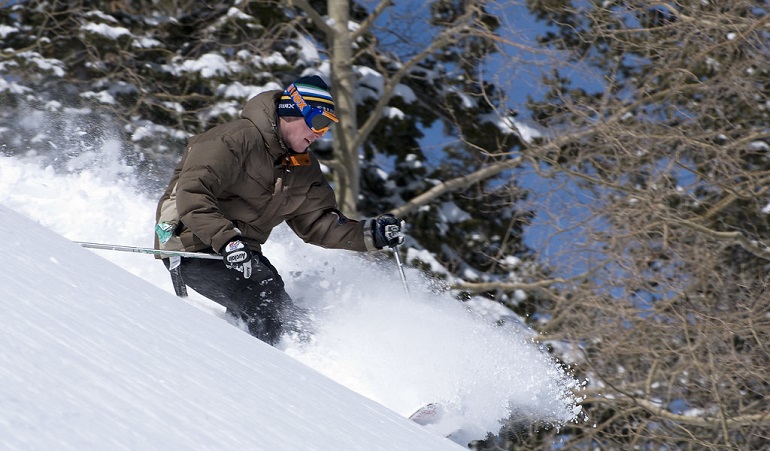
Being a beginner, you will be advised to sit back to stay above the powder, but you need to do the opposite. Do not ever drop your hips behind your heels as in sit-back. Keep your knees over your toes, and hips over your heels.
You need to pressure the tips to get a rebound effect out of the powder skiing. Once you feel that rebound, add rhythm and slow pole plant. If you get it right, you get eligible to be named the master of pow.
Conclusion
Now that you have learned the basics of how to ski powder, grab the right kit, and get out there to explore the mighty snow.
I repeat, try gliding through ankle-deep powder before jumping into knee-deep or thigh-deep powder.
Always prioritize your safety, never ski powder out of bounds and stay away from the trees. Also, keep a track of weather and avalanche reports for a safe journey.
Good Luck!
0 Comments